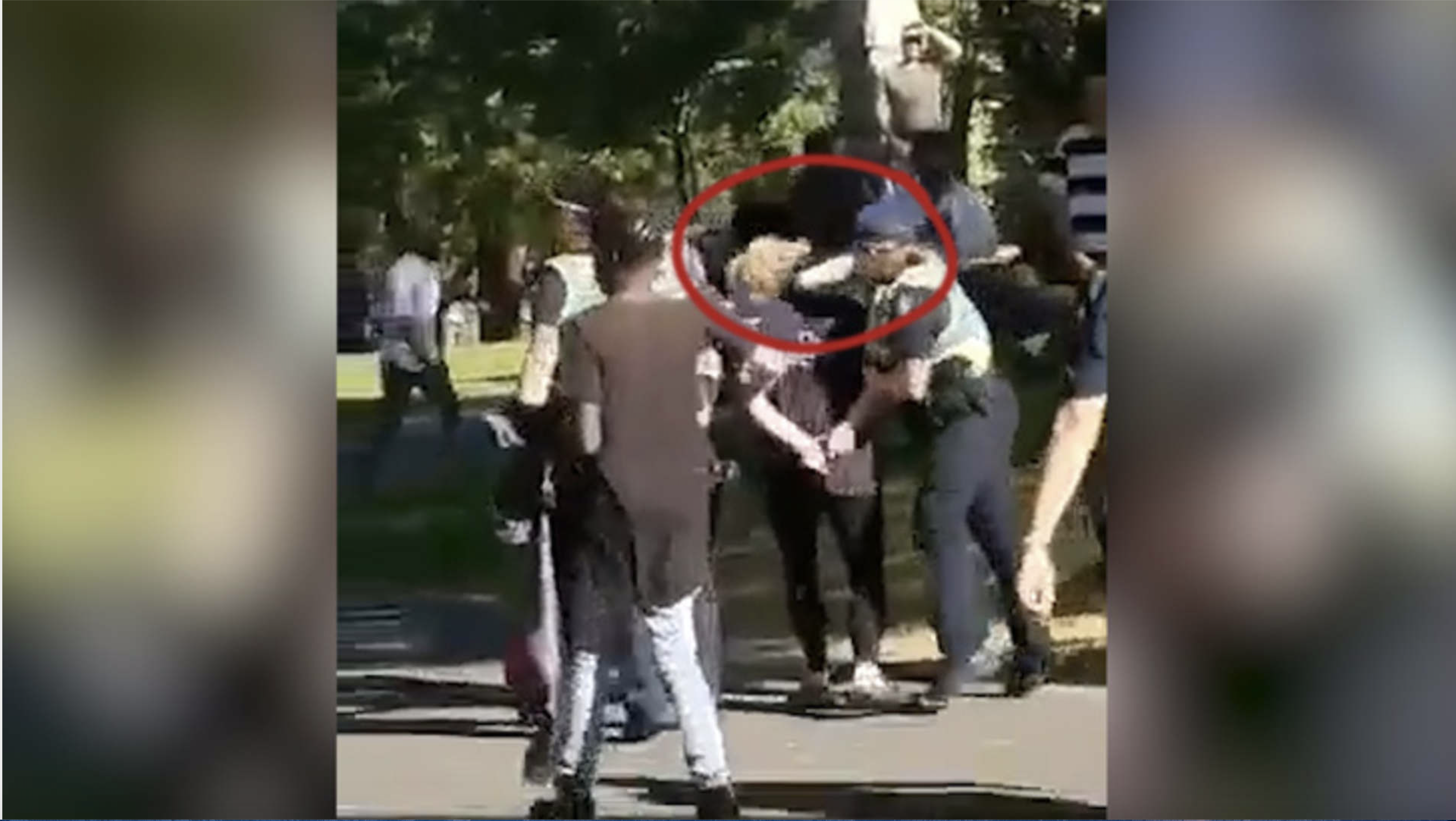Share This Article
By Poppy Morandin & Jimmy Singh.
A Victorian police officer has been found to have used reasonable force in punching a handcuffed 15-year-old girl in the head, at a pro-marijuana rally in Melbourne last year.
Allegedly, the teenager spat at the female officer, who retaliated with the hit.
Before this occurred, the teenager had been handcuffed and held to the ground by five officers for the purposes of performing an arrest, relating to charges of supply and possession of a prohibited substance.
A speaker at the rally, Victorian MP Fiona Patten, commented that the police presence was “overwhelming and unnecessary.”
The heavy-handed nature of the arrest and police presence in general, contrasted with the peaceful nature of the gathering, protesting for the legalisation of marijuana, as commented by attendees.
“It’s a peaceful demonstration – there’s no need for police action,” said Patten.
At the time of the incident, a spokesperson for the Victorian Police said they would only investigate when a complaint was received.
The Professional Standards Command (PSC), which acts as the internal review body of the Victorian Police, cleared the officer of wrongdoing but neglected to detail the reasons as such.
However, as revealed by Police Minister Lisa Neville, it is claimed that ultimately the officer’s actions were considered “not disproportionate in response to the protestor’s actions.”
“Effective policing requires the careful exercise of judgment and the application of appropriate discretion, ensuring the police adapt their response to suit the circumstances. To do this effectively, they may need to use force,” Ms Neville said.
Whilst it is arguable as to whether spitting constitutes an act of assault, this does not detract from the fact that the minor was restrained, with police misconduct specialist Jeremy King commenting how he could not “see how punching her achieves any objective other than instinctive punishment.”
When Can Police Use Force Under the Law in NSW?
In NSW, police must exercise force pursuant to Part 18 of the Law Enforcement (Powers and Responsibilities) Act 2002 (NSW).
Police officers may exercise force ‘as is reasonably necessary’ to exercise their powers, including when making an arrest to prevent the escape of the person. (Section 230 Law Enforcement (Powers and Responsibilities) Act 2002 (NSW))
This indicates that if a suspect resists strongly it entails that officers are able to use a stronger level of force than a situation in which there is no resistance at all.
Furthermore, other factors evidently shape what is considered ‘reasonable’ with NSW Police’s Tactical Options Model (TOM) also requiring considerations of a suspect’s age, gender, size, fitness, and skill level compared to that of the officers present.
It should also be noted that whether any force is permissible hinges on the lawfulness related to exercising the relevant power. This was confirmed in Gibb-Smith v NSW [2018] NSWDC 204, where a man’s arrest which involved having his legs kicked out from beneath him and being forced to the ground constituted assault as it was found he was unlawfully arrested.
The Law Enforcement Conduct Commission is the main body in NSW which investigates complaints made regarding excessive force, however due to underfunding, it is most often up to those who have suffered such actions to mount civil action.
Have a question for us? Contact our criminal lawyers in Sydney to arrange a free consult today.









